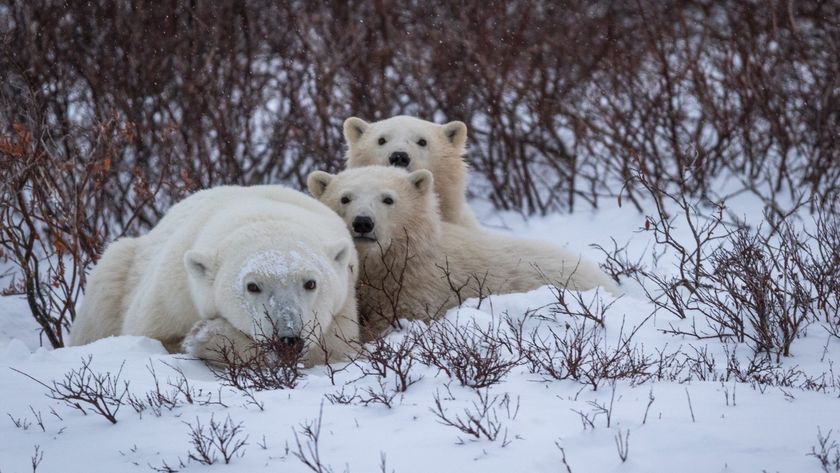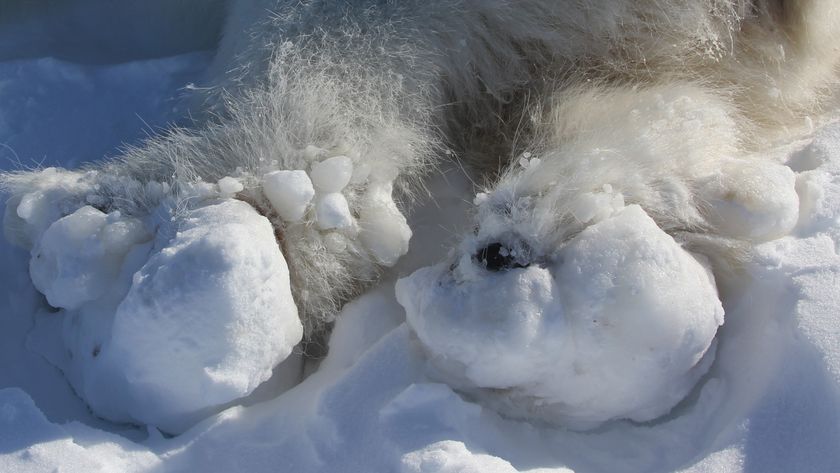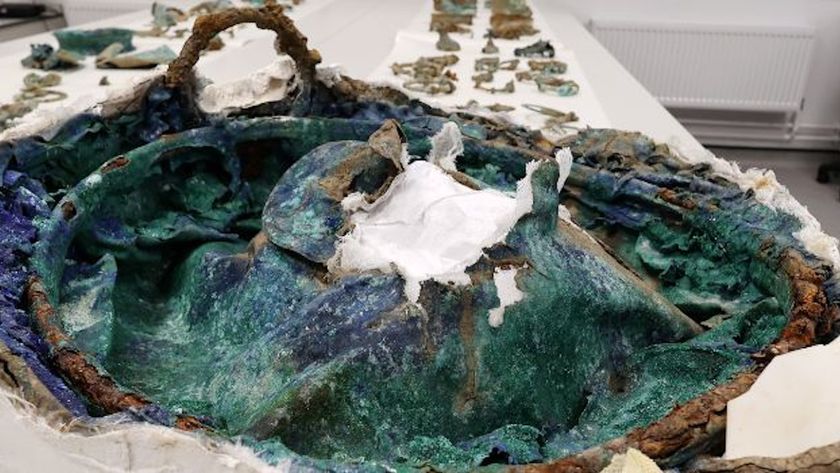In Photos: Polar Bears Eat Dolphins Trapped in Ice
For the first time, scientists have reported polar bears preying on white-beaked dolphins in Svalbard. The sighting, described in the journal Polar Research, is important because shrinking polar bear habitat is expected to change where the animals can live, particularly in the area of Svalbard and the Barents Sea, the researchers say. Images captured of the Svalbard polar bears reveal their lives in the Norwegian High Arctic. [Read the full story on polar bears eating dolphins]
First bite
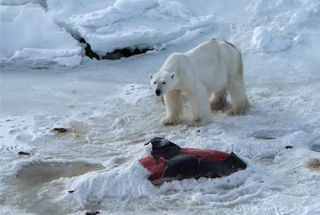
On April 23, 2014, scientists observed an adult male polar bear preying on two white-beaked dolphins (Lagenorhynchus albirostris) that were trapped in the ice on a small fjord in Svalbard, Norwegian High. (Photo Credit: Jon Aars / Norwegian Polar Institute, Polar Research (http://dx.doi.org/10.3402/polar.v34.26612))
Dolphin Head
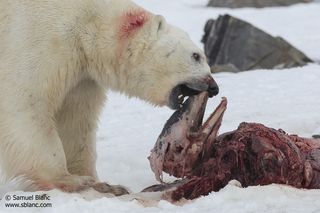
Here, the adult male polar bear feeds on the head of the white-beaked dolphin on a fjord on Svalbard, a group of islands in the Norwegian part of the Barents Sea area. (Photo Credit: © Samuel Blanc / www.sblanc.com)
Cover up

When the scientists spotted the male polar bear, he had eaten most parts of one dolphin (labeled dolphin B by the researchers) and was in the process of covering the second dolphin, this one mostly intact, with snow. (Photo Credit: Jon Aars / Norwegian Polar Institute)
Sign up for the Live Science daily newsletter now
Get the world’s most fascinating discoveries delivered straight to your inbox.
Caching behavior

The researchers noted that such "caching behavior" is not typical for polar bears, since the animals consume most of the fat from their kills within a day, which isn't a lot of time during which they need to keep the carcass away from competitive scavengers. (Photo Credit: Jon Aars / Norwegian Polar Institute)
White-beaked dolphin

"White-beaked dolphins are frequent visitors to Svalbard waters in summer, but have not previously been reported this far north in early spring," the researchers write online June 1 in the journal Polar Research. "We suggest they were trapped in the ice after strong northerly winds the days before, and possibly killed when forced to surface for air at a small opening in the ice." (Photo Credit: Jon Aars / Norwegian Polar Institute)
A wide fjord
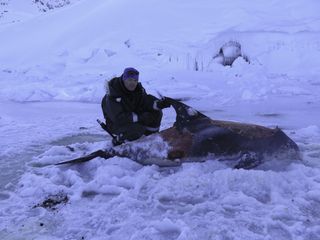
The dolphin-carcass eating occurred on Raudfjorden, a wide fjord on the coast of Spitsbergen, which is the largest island of the Svalbard archipelago. Here, Magnus Andersen with the white-beaked dolphin carcass. (Photo Credit: Jon Aars / Norwegian Polar Institute)
Dolphin pod
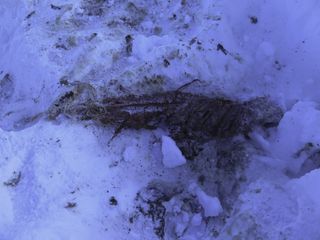
During the following summer and fall, which were both ice-free for Svalbard, researchers saw seven white-beaked dolphin carcasses around the same area. And at least six different polar bears were seen scavenging on the carcasses. The researchers think the dolphins were likely from the same pod as the earlier one, due to their locale and level of decay. These dolphins probably also got trapped in the ice in April. Here, the remains of the dolphin eaten by an adult polar bear. "Little more than the spine, rib cage and skull of dolphin B remained when we found it," they wrote in the journal article.
Follow Live Science @livescience, Facebook & Google+.
Jeanna Bryner is managing editor of Scientific American. Previously she was editor in chief of Live Science and, prior to that, an editor at Scholastic's Science World magazine. Bryner has an English degree from Salisbury University, a master's degree in biogeochemistry and environmental sciences from the University of Maryland and a graduate science journalism degree from New York University. She has worked as a biologist in Florida, where she monitored wetlands and did field surveys for endangered species, including the gorgeous Florida Scrub Jay. She also received an ocean sciences journalism fellowship from the Woods Hole Oceanographic Institution. She is a firm believer that science is for everyone and that just about everything can be viewed through the lens of science.
